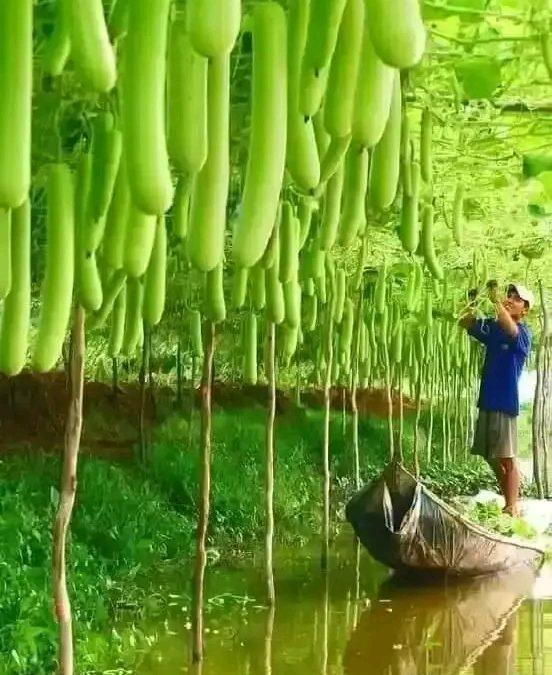Bottle Gourd | Calabash | Lagenaria siceraria.
Bottle Gourd is a popular winter vegetable. Bottle Gourd is a type of creeping plant. Bottle Gourd, Calabash, Lagenaria siceraria. Bottle Gourds are eaten raw as a vegetable, and when mature they are dried and used as bottles, containers, pipes or pipes. Gourd contains a lot of vitamins, water and mineral salts.
Scientific name and identity of Bottle Gourd.
Common name: Bottle gourd, Birdhouse gourd, Tasmania bean, Bottle Gourd, Calabash, Lagenaria siceraria, White-flowered gourd, New Guinea bean, long melon,
Scientific name of Bottle Gourd: Lagenaria siceraria.
The English name of Bottle Gourd is Bottle Gourd.
Lifetime of the gourd:
The average life span of a Bottle Gourd is 165-185 days.
Nutritional Value of Gourd:
Bottle Gourd contains 17 types of amino acids, vitamin C, riboflavin, zinc, thiamin, iron, magnesium and manganese and 96% water. It has no fat and cholesterol.
Planting : Bhadra-Ashwin.
Life span: 120-140 days.
Bottle Gourd yield: 45-50 t/ha (6-7 t/bigha) in winter and 18-22 t/ha (2.5-3 t/bigha) in the Summer.
What does the Bottle Gourd look like?
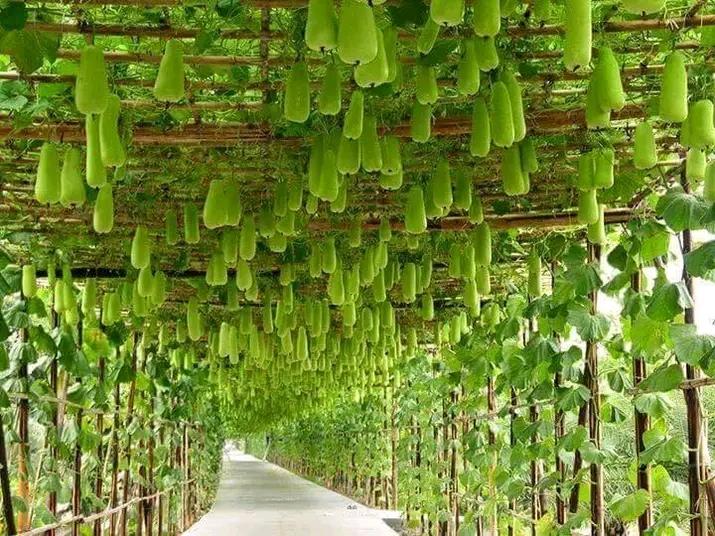
Bottle Gourd
The color of the young Bottle Gourd is light green, with a white shell inside. The color of the young Bottle Gourd is light green, with a white shell inside. It is eaten as a vegetable. Not only the Bottle Gourd, but the bark, vines, and even the leaves of the Bottle Gourd can be eaten. Asian people and Americans like Bottle Gourd more.
Naming of the Bottle Gourd.( Name-history of the bottle gourd).
Bottle Gourds are one of the oldest cultivated vegetables in the world, originating in Africa. The name of the Bottle Gourd varies depending on the place.
The leaves of the Bottle Gourd.
The leaves are dark green. The leaves are somewhat rounded. Average leaf size is 20 to 32 cm. 40 cm if you get enough fertilizers and pesticides.
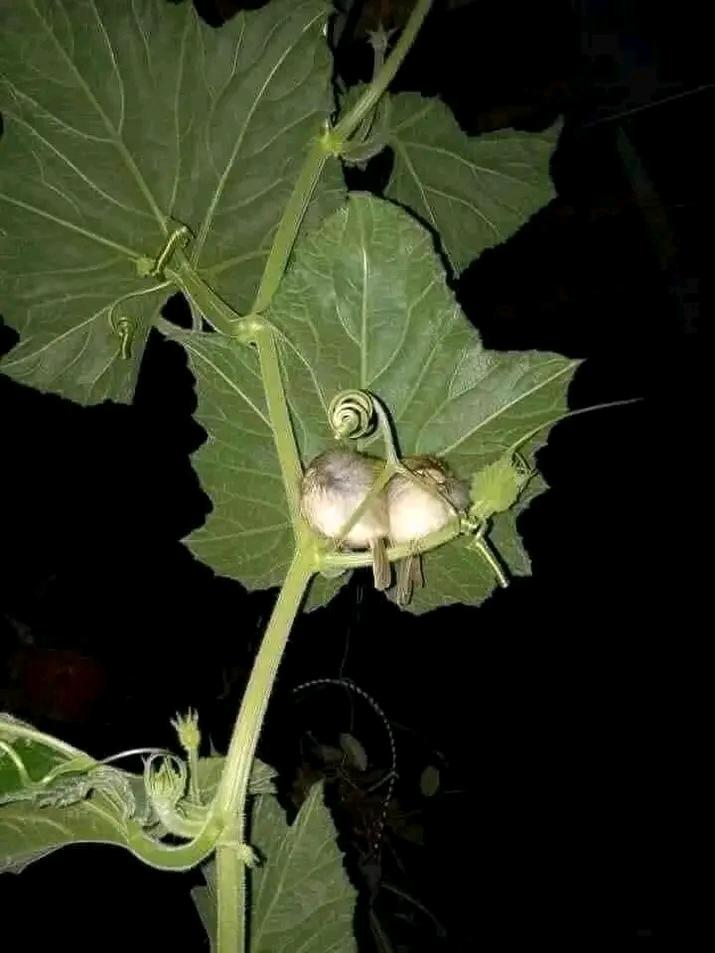
The leaves of the Bottle Gourd.
The Flowers of the Bottle Gourd.
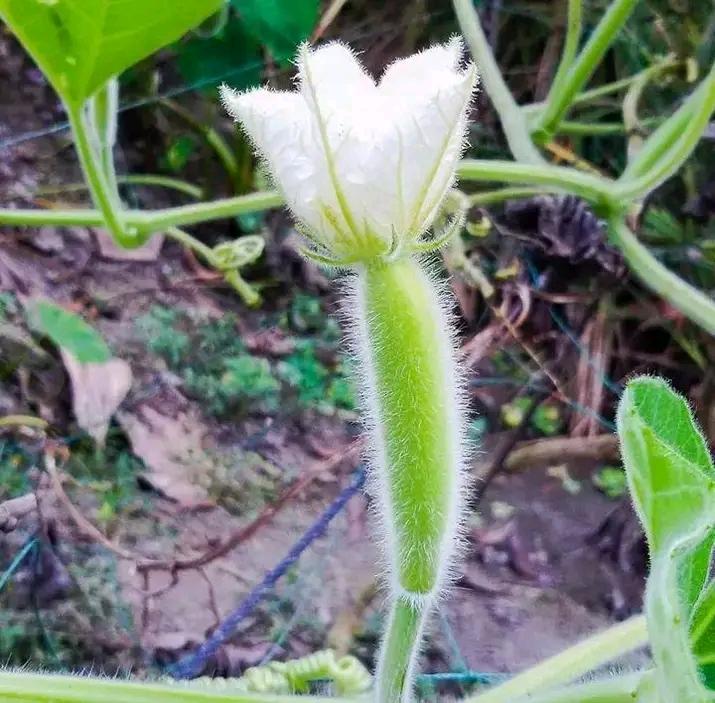
The Flowers of the Bottle Gourd.
Bottle Gourd flowers are white, with data, sticky, stay good for 10 days. There are two types of flowers. One is associated with stamens and the other is associated with pistils. Seeds are produced through pollination.
The root of the bottle gourd.
The roots are white, very long, soft in nature. 10 to 12 meters long. When the tree dies, the roots rot within 10 to 12 days.
Importance of Bottle Gourd.
Bottle Gourd are available in large quantities in the winter market. Bottle Gourd is a winter vegetable but is now a year-round fruit. This vegetable is full of nutrients.
Bottle Gourd with prawns is very tasty. This vegetable can also be eaten with pulses. Many people also eat taki with fish. The upper bark of the Bottle Gourd can be dried and eaten. According to doctor, gourd is very beneficial for human body.
Nutritional value of Bottle Gourd.
1. 96 percent of Bottle Gourd is water. As a result, regular consumption of Bottle Gourd fills the water deficit in the body.
2. Lagenaria siceraria helps lower blood cholesterol.
3. Calabash are rich in vitamin C and antioxidants, which are beneficial for the heart.
4. Calabash can also be eaten for jaundice and kidney problems.
5. Lagenaria siceraria are very low in calories and high in dietary fiber. It also helps in weight loss.
6. Calabash is a useful vegetable for diabetic patients.
7. Bottle Gourd contains soluble, insoluble fiber and water. Soluble fiber helps digest food easily.
8. Constipation, flatulence and acidity problems are reduced by eating gourd.
9. Lagenaria siceraria leaves curry cools the brain, solves sleep problems and also regulates body temperature.
10. Doctor advises to eat Calabash to reduce urine infection.
11. Calabash contain a lot of water, which helps in maintaining the body’s water content. Helps relieve dehydration caused by diarrhea.
12. Eating Bottle Gourd keeps the skin moist.
13. Urinary infection problems are eliminated. Kidney function increases.
14. It is ideal vegetable for hypertensive patients.
15. This vegetable regulates body temperature. It plays an important role in getting full sleep by eliminating insomnia or sleeplessness.
16. Lagenaria siceraria contains calcium and phosphorus, which eliminates salt deficiency caused by sweat in the body. Strengthens teeth and bones.
17. Calabash are also very beneficial for diabetics as they are low in calories. Gourd also gives good results during dieting.
18. Strengthens the hair roots and reduces the rate of hair loss.
19. Bottle Gourd has helpful properties in preventing constipation, hemorrhoids, flatulence.
Bottle Gourd Cultivation Method.
Bottle Gourd is one of the most delicious vegetables in our country. Gourds grow in all types of soil. Generally, Lagenaria siceraria is cultivated more in winter. Because the leaves of Bottle Gourd are soft and green, they are eaten as leaf and stem vegetables and cooked in gourd fritters and curries. Gourd is a creeping plant so it can be planted and cultivated throughout the year.
Gourd cultivation methods are discussed in detail below:
Method of making Bottle Gourd seedlings.
Mix 1 part rotted dung, 1 part loam soil in a small polythene bag and leave it for five days with water mixed with mild urea. Then one seed should be sown in each polythene. Seeds should be soaked in water for 12 hours before sowing.
Planting and collection of Bottle Gourd seedlings:
Three holes of 1.5 inches should be drilled in a half drum. Then put a brick cover on the hole. Mix 2 parts sandy loam soil with 1 part dung, zero and 5 kg of mustard seeds, 5 kg of rotted kachuripana, 50 grams of TSP, 25 grams of urea and keep it for seven days. Then the seedlings should be planted. In order for the gourd plant to grow properly, a trellis must be arranged. If someone wants to put the gourd on the floor of the roof, then they can spread coconut shells and lay them on it. Bottle Gourd are water-loving plants.
Water should be given every morning and afternoon. Roof plants require a little more water. One seedling can be planted in each half drum.
Gourds of advanced and good varieties:
Hybrids – Martina, Diana, Varsha and Tafsi. Among Ufshi- Green Diamond, Bari Gourd and Field Gourd.
Preparation of soil for cultivation of Bottle Gourd.
Lagenaria siceraria grow in almost all types of soil. But mainly loam to clay loam soil is good for gourd cultivation.
Lagenaria siceraria are generally diurnal creepers, so they can be harvested most of the year.
Sowing and seedling production:
It is best to prepare seedlings in polythene bags for gourd cultivation. It costs less. 800-1000 grams of seeds are required per hectare if seedlings are planted in polythene bags.
Sowing time:
For winter cultivation the seeds can be sown during mid-Bhadra to mid-Kartika (September-October). But for early winter crops the seeds should be sown in the 1st week of Bhadra.
Making land:
In our country, 2-3 gourd trees are mainly planted around the homestead, such as on the edge of the cow house or on the bank of the pond. If you want to cultivate Bottle Gourd in a large amount of land, you must first prepare the land well by plowing and using a ladder.
Planting seedlings:
2×2 m for Bottle Gourd cultivation. 4-5 seeds should be sown per plant at a distance. Lagenaria siceraria can also be cultivated in winter season under open conditions. However, the yield is higher in the loft. Besides, Bottle Gourd can also be grown there by sowing seeds with soil in floating kachuripana piles.
Interim care:
It is forbidden to regularly water the roots of the trees, break the soil, give the plant and do other maintenance. The loft should be tied tightly.
Gourd leaves are green and soft. Male and female flowers bloom in 42-45 days and 57-60 days after planting respectively. Light green color fruit shape is long (40-45) and girth about 30-35 cm. Each fruit weighs 1.5-2 kg. An average of 10-12 fruits per tree.
First fruits can be harvested within 60-70 days of planting. Gourds are mainly winter season. Yield is higher in winter. It is tolerant of high altitude and heavy rainfall so it can be grown throughout the year. It can be cultivated throughout the year in all areas of Bangladesh. Bhadra can be cultivated first as an early crop for winter cultivation.
Climate of Bottle Gourd:
A climate that is neither too cold nor too hot is good for growing gourds. Bangladesh winter is more suitable for gourd cultivation. However, the temperature of some regions of Bangladesh sometimes reaches 100 C in winter. falls below it, which is a serious threat to Lagenaria siceraria cultivation. Temperature difference between day and night is 8-90 degrees. The yield of Lagenaria siceraria decreased significantly.
Sowing time and seeding rate:
August to October is the best time to sow the seeds. But late October sowing is best for seed production. 700-800 grams of seed is required per bigha.
Refine the seeds:
Seed treatment is essential to prevent seed borne diseases and produce vigorous young seedlings. Seed treatment can be done using 2 Vitavex/Captan per kg.
Create the seedbed:
For cultivation of Lagenaria siceraria, seedlings should be produced in polybags in the nursery. For this, the bed should be raised 20-25 cm in a place where light and air are available naturally. A 4-5.2 meter shaped house should be made on the rise. The height of the house from the Lagenaria siceraria along the edges of the house will be 0.6 m and the height of the center of the house from the ground will be 1.7 m. Bamboo, bamboo kanchi, plastic for canopy and twine or rope for tying them will be required for making this house.
Sow the seeds:
8x 10 cm for sowing seeds. Or a slightly larger size polybag can be used. First of all, soil should be prepared by mixing half of soil and half of dung. Make sure that the soil is fertilized (if the soil is not fertilized with water) to fill the polybag. Then two seeds should be sown in each bag. The seeds should be buried twice as deep in the soil as the seeds.
Care of seedlings in the nursery:
Necessary care of seedlings should be ensured in the nursery. Overwintering causes seed germination problems. For this reason, in case of winter seedling production, polybags should be covered with plastic every night until the seeds germinate and should be kept open during the day. The saplings should be watered as required but care should be taken that water does not fall on the saplings. If the soil of the polybag is compacted, it should be broken.
Easy germination of seeds:
The skin of the Calabash seed is somewhat hard. So for easy germination just soak in clean water for 15-20 hours or overnight in 1% potassium nitrate solution and then weave in polybag.
Land selection and land creation:
For cultivation of these crops, land with good irrigation and drainage facilities and adequate sunlight should be selected. Disease and insect infestation can be reduced if the same crop can be avoided repeatedly on the same land. Soil and pit should be well prepared for extensive root growth.
Bed making and distance from bed to bed:
The height of the bed will be 15-20 cm. The width of the bed shall be 2.5 meters and shall be taken according to the length of the long land. In this way successive beds should be made. 60 cm between the 2 growths as well. diameter irrigation canals and only drainage canals 30 cm wide every 2 beds.
The distance between the female and the female in the bed is made:
Mother size will be 50-55 cm in diameter. Depth 50-55 cm. And bottom 45-50 cm. 60 cm on the side of the bed. 60 cm from the edge of the bed where there will be wide irrigation and drainage channels. Apart from that, mada should be made in a row at 2 meter intervals along the center of the mada. 60 cm from the outer edge of one. shall be excluded, 60 cm from the same edge of the adjacent bed. With the exception of the center of the mother, the mother should be made according to the same rules.
Fertilizer quantity and method of application:
These crops are long lived and bear fruit for a very long time. Therefore, for the successful cultivation of these crops, it is necessary to ensure adequate food supply for the plants. They extend their root zone far to collect enough food. Fertilizer levels are not recommended in all regions of agriculture subject to soil testing. Therefore, the following rates of fertilizer are recommended on the basis of experimental evidence for those regions where fertilizer levels are not specified.
Fertilizer level and application method of Bottle Gourd crop:
Among the recommended levels of fertilizers during land preparation, cow dung should be applied after cultivation and TSP, MP, gypsum and borax fertilizers should be applied during final cultivation. After applying the recommended level of fertilizer for planting seedlings in the mother plant, the mother soil should be thoroughly soaked with water. Then after 7-10 days when ‘Joe’ comes seedling should be planted.

Bottle Gourd Field
Age of seedling: Seedlings 16-17 days after germination are best for planting in the field.
Care provided irrigation:
Gourd crops are very sensitive to water. In excess of the required water, fruit retention will be disrupted and the fruit will drop slowly. So regular irrigation should be given as per requirement with irrigation canal. Gourd land should never be flooded by soaking all the land. Only if the irrigation canal is blocked with water will the plant draw water. During the dry season, gourd crops need to be fertilized every 4/5 days.
Given the bowie:
To get good yield of Bottle Gourd must be cultivated in loft. Cultivation of gourds in the ground causes discoloration of one side of the fruit and reduces its market value, resulting in rotting and reduced natural pollination. As a result the yield also decreases.
Mulching:
After irrigation, the soil becomes sticky. Flat dams disrupt air circulation in the root zone of plants. Therefore, every irrigation should be done with a light mulch to break up the soil at the base of the plant.
Weed control:
Certain species of grasses are host to a disease known as bottle gourd mosaic virus. So the land should always be kept weed free from planting till harvesting. In addition, if there are weeds at the base of the plant, they absorb nutrients and sap.
Diseases and remedies of different types of Bottle Gourd plants:
Lagenaria siceraria are typically winter vegetables. But now it is cultivated in summer also. Even at home, many people plant gourd plants in tubs on the roof or balcony these days. No matter where the crop is grown, lack of proper care can result in crop failure. So you have to keep a conscious eye on this.
In any vegetable or crop cultivation we have to take care that it is not affected by insects or diseases. Today our topic is gourd plant diseases and remedies.
1. Downy mildew disease:
It is a fungal disease. Normally water accumulation in the leaves can cause this disease.
Symptoms:
The upper side of the leaf turns pale green. It slowly turns yellow and later turns brown.
Remedy:
The main cause of this disease is the accumulation of water in the leaves. So care should be taken that water does not accumulate on the leaves. Care should be taken that there is no water in any of the leaves.
Besides, 1-2 grams of Mancoze or Ridomel Gold should be mixed in one liter of water and sprayed.
2. Powdery mildew disease:
It is also a fungal disease. This results in leaf drop, stunted fruit growth.
Symptoms are:
Usually more common on older leaves. First, pale yellow spots appear on the leaves. Gradually, white powdery spots appear on both sides of the leaves. At one point the entire leaves and stems are covered with spots.
Remedy:
Care should be taken not to have excess nitrogen in the soil. For this, the soil should be tested. Regular weeding should be done and ventilation should be provided at the base of the plant. Any leaves that look diseased should be cut off immediately. Besides, sulfur or copper fungicides can be applied.
3. Stem blight disease:
It is a fungal disease. If the seed or soil is not treated properly then there is a risk of this disease.
Symptoms:
Stem blight causes the plant stem to turn black and then rot. After a few days, the affected stem breaks. Dark brown spots appear on the leaves.
The best remedy:
Remedy is to use disease-free seedlings or seeds. Therefore, it is better to clean the seeds before sowing. Besides, if the tree is infected, it should be removed and thrown away. Mixing Mancozeb or Ridomil 2 grams in one liter of water and spraying after 7-10 days will also give benefit.
4. Red Pumpkin Disease:
This disease is caused by an insect attack.
Symptoms:
This disease is caused by the pumpkin beetle. Adults eat plant leaves. Only leaf veins and subveins are visible. This insect also eats the lower stem of the tree so the tree dries up and dies. Flowers and young fruits are also affected by this insect.
The remedy:
Remedy is to catch the insect and kill it. Carbofuran insecticides should be applied in case of excessive infestation.
5. Flies are insect diseases:
This disease is caused by an insect that looks like a fly.
Symptoms:
The female insect starts laying eggs by inserting the skin under the young fruit. Later the worm comes out and starts eating the fruit. Fruit rots, disfigures, turns yellow and falls off.
Remedy:
If the fruit is infested with insects, the fruit should be discarded. Young fruits should be covered with polythene. Apart from this, medicines like Seco Alpha can be sprayed by mixing 2.5 EC with one liter of water.
6. Jab insect:
This disease is caused by the attack of jab insect. Insects eat leaves, flowers, fruit juice, so the tree falls.
Remedy:
The insect affected area should be thrown away. Dry ash or water spray should be applied in the initial stage. Apart from this, yellow trap is very useful in suppressing this insect. Mix yellow cloth with glue and keep it on the ground. Jab insects will fly into this cloth and get stuck. It is called yellow trap. Also, tobacco powder, soap powder or neem extract can be sprayed.
If the insect attack is high, add Edmere 20 SL 0.5 ml to one liter of water and spray.
7. Falling disease:
Generally, this disease is caused by fungal or bacterial attack. If affected by this disease, the tree falls.
Remedial:
Seeds should be treated and sown. If the tree is affected, it should be burnt. Besides, sprinkling bleaching powder on the ground will be beneficial.
8. Thrips is an insect disease.
This insect eats young leaves and agar juice. The tree fell in it.
Remedy:
Yellow trap can be used. Neem leaf extract can also be applied.
9. Leaf burn disease:
This disease is caused by a type of fungus.
Symptoms of this disease:
First, yellow-brown spots appear on the leaves. Gradually the spots enlarge and spread over the whole leaf. The leaves look burnt.
Remedy:
Remove affected plants. In case of more attacks, drugs like tebuconazole or trifloxystrobin should be applied.
10. Leaf curl disease:
It is a viral disease. A type of whitefly is a disease of Dwar.
Symptomatic:
plants are stunted. The leaves of the tree are shriveled and the leaves look like a fry.
Remedy.
Affected trees should be destroyed. Land should always be kept clean. Besides, one liter of water should be mixed with dimethoite or Edmere and sprayed.
This harmful insect first lays its eggs in the gourd fruit, then the worm comes out of the egg and eats the inside of the fruit and destroys it.
Suppression measures:
Clean Cultivation: Fruits infested with maggots rot quickly and plants drop to the ground. Infested fruit should never be left around the field. Collecting and destroying the infested fruit can greatly reduce the breeding of the fly bug.
The combined use of sex pheromones and baited traps.
It is possible to attract large numbers of honey bee males using the sex pheromone called culiore. The pheromone can be used to kill the attracted flies through the water trap. Adult female and male flies are attracted to baited traps and die in the trap. 100 grams of ripe sweet pumpkin should be chopped and crushed and mixed with 0.25 grams of Mipsin 75 powder or Sevin 85 powder and 100 ml of water should be placed in a small earthen vessel with the help of three poles so that the bait vessel is 0.5 meters above the Lagenaria siceraria. After preparing the bait, after using it for 3-4 days, it is necessary to throw it away and use the newly prepared bait again. Sex pheromone and poison trap in the field of Lagenaria siceraria crops respectively 12 m. should be placed far apart.
Pumpkin Beetle:
Adults of the pumpkin beetle burrow into plant leaves and eat the entire leaf from the leaf edge and the entire green portion of the adult plant leaving the veins. This insect also attacks flowers and young fruits. Their worms bore holes in the roots or subsoil, causing the plant to droop and eventually dry up and die.
Suppression measures:
1. If the seedlings are infected, the adults should be killed by hand.
2. Keep the field clean at all times.
3. If the seedlings are covered with mosquito net for 20-25 days after the emergence of the seedlings, the seedlings are saved from the attack of this insect.
4. If the attack rate is high, after the seedlings grow, 2-5 grams of approved granular insecticide (carbfuran insecticide) mixed with the soil around each mother plant and irrigate the roots.
Mosaic | Calabash.
After germination, the seed coat turns yellow and the seedling droops. Yellow-green patchy mosaic-like spots appear on the leaves of mature plants. The spots are uneven in size. Grows fast. Affected leaves are small, deformed and curled downwards, discolored. Veins also turn yellow. Flowering is less frequent and leaves and plants die in heavy infestations. Infected fruits are bent and young plant tips appear tangled. The upper part of the fruit is rough.
Remedial measures:
1. If you see an infected tree, remove it and destroy it first. Keeping the field clear of weeds.
2. Controlling the presence of vector insects in the field by applying approved insecticides.
3. Do not collect and use any seeds from diseased plants.
Fertilizer Application:
After transplanting, the rate of fertilizer application per plant as mentioned in the table should be applied.
Name of Fertilizer Total quantity (per hectare) per pit at the time of land preparation:
Rotten cow dung 1000 kg 10 kg Samudaya cow dung, TSP, MOP, Boron.
Urea 500 kg 500 g and 1/5 part Urea to be applied at the time of making peat or pit.
TSP 400 kg 400 g will be Remaining MOP.
MOP 300 kg 300 gm and Urea should be applied annually in 4 installments.
Boron 2 kg 02 gm
Special care.
Remove the absorber branch.
There are small branches at the base of the tree. They are called absorptive branches. They interfere with plant yield and proper physical growth. So 40-45 cm towards the base of the tree. The stems should be removed by cutting them with a sharp blade.
Artificial pollination to increase fruit set.
Pollination of gourd is done mainly by bees. Natural pollination requires two bee colonies per hectare to produce high yields. Due to various reasons, natural pollination does not occur in all gourd flowers and the yield is reduced. It is possible to increase the yield of gourd by 30-35 percent by artificial pollination by hand. If the gourd flowers get proper sunlight, they start blooming after noon and bloom till 7-8 pm. Artificial pollination can be done in the evening on the day of flowering and the next morning. However, if pollinated the next morning, the fruit will be less, but by the evening of the flowering day, all the flowers that are pollinated will bear fruit. The principle of artificial pollination is that after flowering, the male flower is plucked to remove the petals and the anther (which contains the pollen) is gently rubbed against the pistil (which is located behind the ovary at the base of the petals) of the female flower. A male flower can pollinate 2-4 female flowers.
Harvest (identification of maturity).
The edible maturity of the fruit can be identified as follows.
1. There will be a lot of stigmas on the fruit.
2. If you press on the fruit with your fingernail, the fingernail will peel off very easily.
3. Fruits are ready for harvesting 12-15 days after pollination.
Cut the gourd fruit with a sharp knife leaving the long end of the fruit. Care should be taken not to damage the tree while harvesting the fruit. The more gourds can be collected, the higher the yield.
Yield: Bari Lau-1 and Bari Lau-2 can yield up to 35-40 tons per hectare and about 4.5-5.0 tons per bigha if cultivated properly.
Collect fruit for seed.
Well-ripened fruits must be collected for seeds. Fruit maturity can be determined in two ways. For example-
1. If you shake the fruit, you will find the sound of the seeds inside.
2. The skin of the fruit will dry out and become hard but the inside of the fruit will not dry out. In this condition, the fruits should be left for 2-3 weeks for ripening after the collection of seeds. For seed production, among all the plants on the land, after checking the freshness, yielding capacity and health of the plants, some specific plants should be selected and pollinated in a controlled manner. That is, male flowers of the same plant should pollinate the female flowers of the same plant or male flowers of one plant of the same variety should pollinate the female flowers of another plant. In this case, the male and female flowers should be tied with a butter paper bag before the flowers bloom so that they cannot be pollinated by the molecules of the male flowers of other varieties, and when the flowers bloom, the female flowers should be pollinated and the female flowers should be tied with a bag. The fruit should be tied by this bag for 3-4 days.
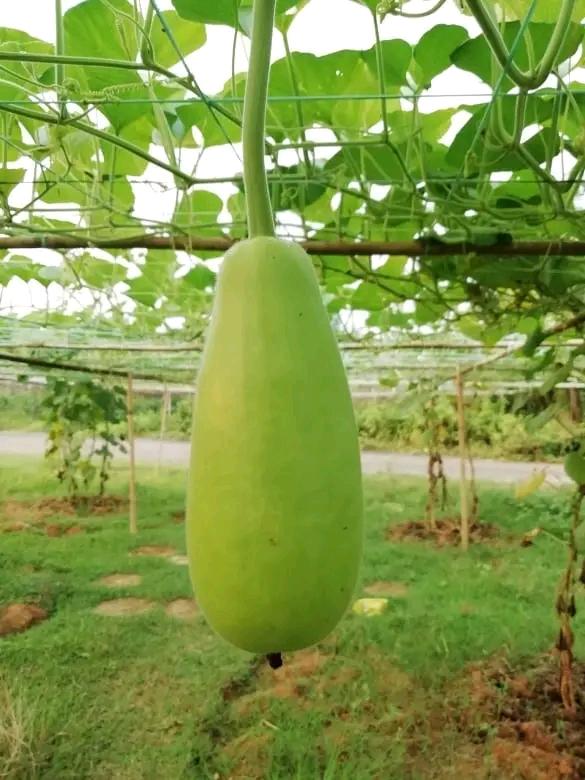
Lagenaria siceraria
You can also visit our another article;

